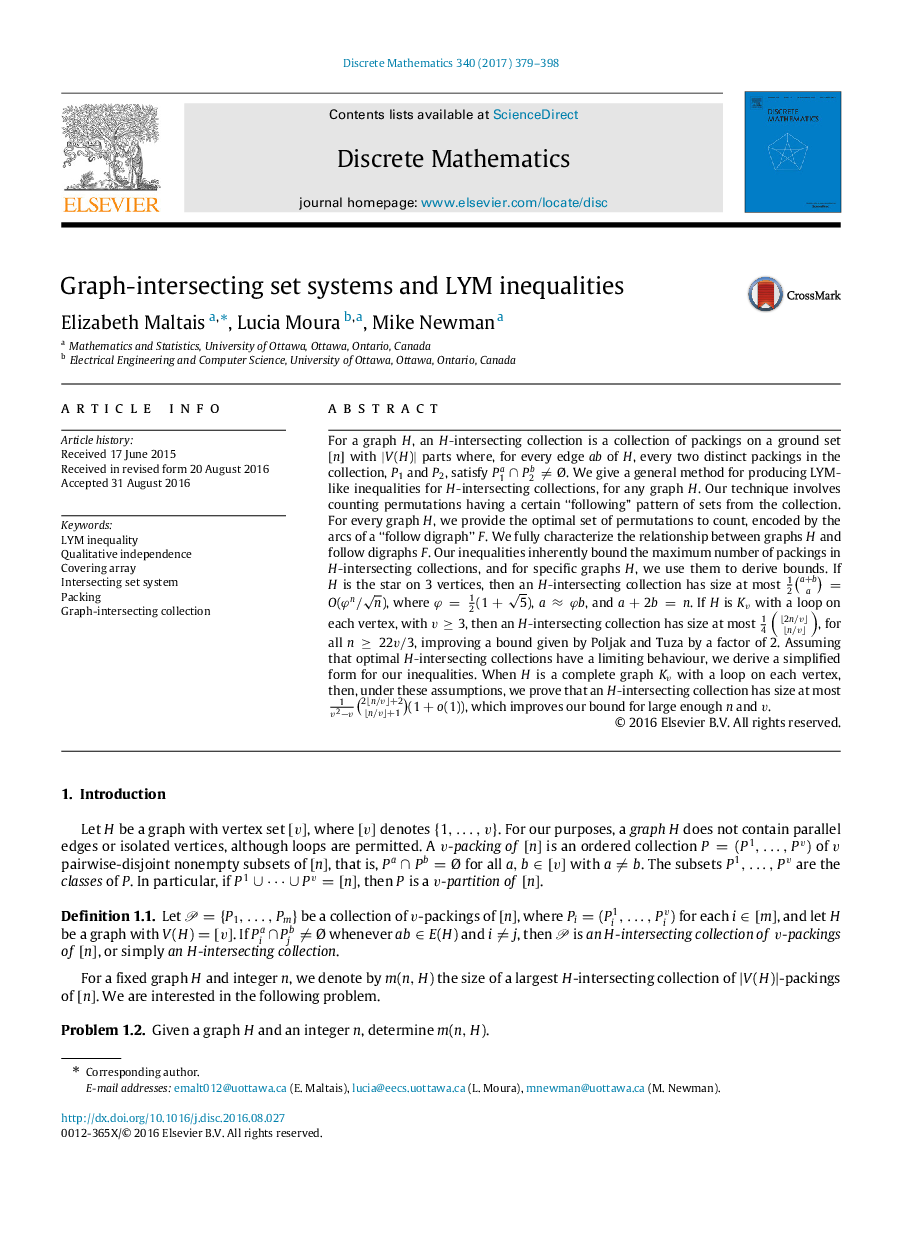| Article ID | Journal | Published Year | Pages | File Type |
|---|---|---|---|---|
| 5777026 | Discrete Mathematics | 2017 | 20 Pages |
Abstract
For a graph H, an H-intersecting collection is a collection of packings on a ground set [n] with V(H) parts where, for every edge ab of H, every two distinct packings in the collection, P1 and P2, satisfy P1aâ©P2bâ Ã. We give a general method for producing LYM-like inequalities for H-intersecting collections, for any graph H. Our technique involves counting permutations having a certain “following” pattern of sets from the collection. For every graph H, we provide the optimal set of permutations to count, encoded by the arcs of a “follow digraph” F. We fully characterize the relationship between graphs H and follow digraphs F. Our inequalities inherently bound the maximum number of packings in H-intersecting collections, and for specific graphs H, we use them to derive bounds. If H is the star on 3 vertices, then an H-intersecting collection has size at most 12a+ba=O(Ïnân), where Ï=12(1+5), aâÏb, and a+2b=n. If H is Kv with a loop on each vertex, with vâ¥3, then an H-intersecting collection has size at most 14â2nâvâânâvâ, for all nâ¥22vâ3, improving a bound given by Poljak and Tuza by a factor of 2. Assuming that optimal H-intersecting collections have a limiting behaviour, we derive a simplified form for our inequalities. When H is a complete graph Kv with a loop on each vertex, then, under these assumptions, we prove that an H-intersecting collection has size at most 1v2âv2nâv+2nâv+1(1+o(1)), which improves our bound for large enough n and v.
Keywords
Related Topics
Physical Sciences and Engineering
Mathematics
Discrete Mathematics and Combinatorics
Authors
Elizabeth Maltais, Lucia Moura, Mike Newman,
